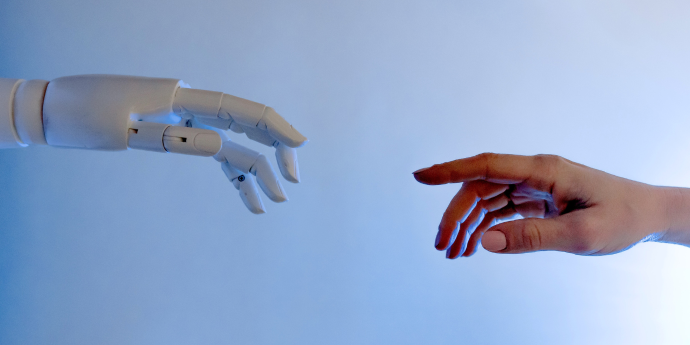"Ghost hearts" can save lives
Lab-grown “ghost hearts”, made from a pig heart and the patient’s own stem cells, can ease the transplant shortage.

OPINION: Tragically around 60 or more workers in New Zealand die each year as a result of an injury at work. WorkSafe – Mahi Haumaru Aotearoa also reports an annual toll of more than 2,500 serious workplace injuries or illnesses.
Frustratingly, these statistics are at a similar level to those seen when the Health and Safety at Work Act 2015 came into effect in 2016. Increased liability and a more prominent positioning for Health, Safety and Wellbeing (HS&W) on board agendas seems to have, at best, limited a potential increase in serious harm incidents – far short of the intention of legislation, and the aspirations of governors, for workers to make it home safe each day.
We must find a way to do better, much better.
“Any sufficiently advanced technology is indistinguishable from magic.”
Given the pervasiveness of digital, and other technologies in our daily lives and workplaces, might better use of emerging technologies be part of the solution - perhaps even act as the “magic” required to make a real difference?
In June 2023, the Canterbury Branch of the Institute of Directors assembled a panel of experts to investigate the upside potential, risks, and success factors associated with the use of emerging technologies to improve our HS&W performance.
Our expert panel was:
Aliesha Staples MInstD - founder of tech consultancy and development company Staples VR.
Bede Cammock-Elliott - founder of digital security firm seedigital
Chris Alderson CMInstD - CEO, Construction Health & Safety NZ (CHASNZ)
Dr Elsamari Botha MInstD - associate professor at the University of Canterbury
Francois Barton MInstD - executive director of the Business Leaders' Health & Safety Forum (the Forum)
Before delving into the details of specific technologies, our panellists emphasised the importance of HS&W fundamentals that every senior leader and board member should consider, including:
CHASNZ’s Alderson emphasised that in the real world these fundamentals are not always followed. Focus may not be directed towards the greatest potential for harm, there can be a lack of actionable data and controls may be put in place but their effectiveness is never validated. Technology can only add value when these fundamentals are part of your HS&W strategy.
In fact, the hierarchy between technology and strategy can become muddled.
“We can often misconstrue technology itself as a strategy – but it is simply a response to a strategic imperative,” says Cammock-Elliot. “Tech projects regularly fail due to this misconception between tech and strategy.”
Barton from the Forum highlighted the example of technology being used in isolation to a HS&W strategy in the mental wellbeing space. There are plenty of smartphone applications that organisations sign up to with positive intent, but it is far from assured that they will achieve sufficient engagement with workers, limiting their effectiveness, he said: “Fools with tools are still fools. Step one is to educate yourself on the fundamentals.”
The HS&W profession has not necessarily served boards and the wider business community well by perpetuating the idea that effective HS&W is simply preventing bad things from happening. The more contemporary paradigm is that safety is the presence of good controls in your business.
Ideally, controls could be engineered to completely avoid critical risks. More realistically, controls will not be fully effective, so having insights into the performance of these controls becomes critical.
In 2019, one of seedigital’s clients suffered a workplace fatality which, in hindsight, was avoidable. The client’s CEO, was shocked that they were unaware that their controls were not as effective as they had thought.
This led to the creation of “seeo”’ –closed-circuit television (CCTV) footage analysed by AI for undesirable HS&W behaviours, process compliance and sub-optimal work design. It shows work as actually done, versus imagined or assumed.
“HS&W reporting, near miss reports, are not what is actually going on,” Cammock-Elliott says. Customers are often stunned to see what is going on right under their noses. But seeo’s focus is not on compliance for compliance sake. Instead it’s being used to for proactive responses including training, work redesign and reprimands where appropriate. An example was shared where a logistics provider demonstrated a reduction in monthly events of concern from 1,800 down to two.
Unfortunately, the cost of investing in the required HS&W controls can be harder to pitch than the prospective return-on-investment (ROI) from other commercial opportunities.
Associate Professor Botha challenged the panel to consider this a different way: “What if you flip the paradigm (away from cost) and look for value?”
Staples shared an example of the acceleration of aircraft engineering training through the use of virtual reality (VR). The training itself is faster, more consistent and easier to validate through integrated assessments and the collection of data than traditional “role play”. From a cost perspective, VR reduces the need for expensive access to aircraft.
Barton highlighted that there are many technologies that do more than one thing. For example, mechanised lifting reduces lifting harm but can also create a productivity gain. In meat processing, bandsaw safe stop technology can avoid and increase recruitment opportunities across a more diverse potential workforce.
Boards should have ethics and ‘guardrails’ at the forefront of their implementation plan. If data is being collected, it should be used for improved organisation performance, not for punitive purposes. Other things to consider are cybersecurity, how long data is held for and policies, procedures and controls.
It may be necessary to fully shut down a previous system to prevent legacy processes.
Boards also need to consider the consequences if the implementation does not go to plan.
Finally, consider unintended consequences. When technology is used to reduce the risk of harm, one potential response is to take greater risks.

Lloyd Mander CMInstD is the principal consultant for DOT Scorecard – working with boards and senior teams to reveal their potential for cognitive diversity and then develop the decision-making culture required to realise this potential.
The views expressed in this article do not reflect the position of the IoD unless explicitly stated.
Contribute your perspectives and expertise on an area of governance to the IoD membership and governance community. Contact us mail@iod.org.nz